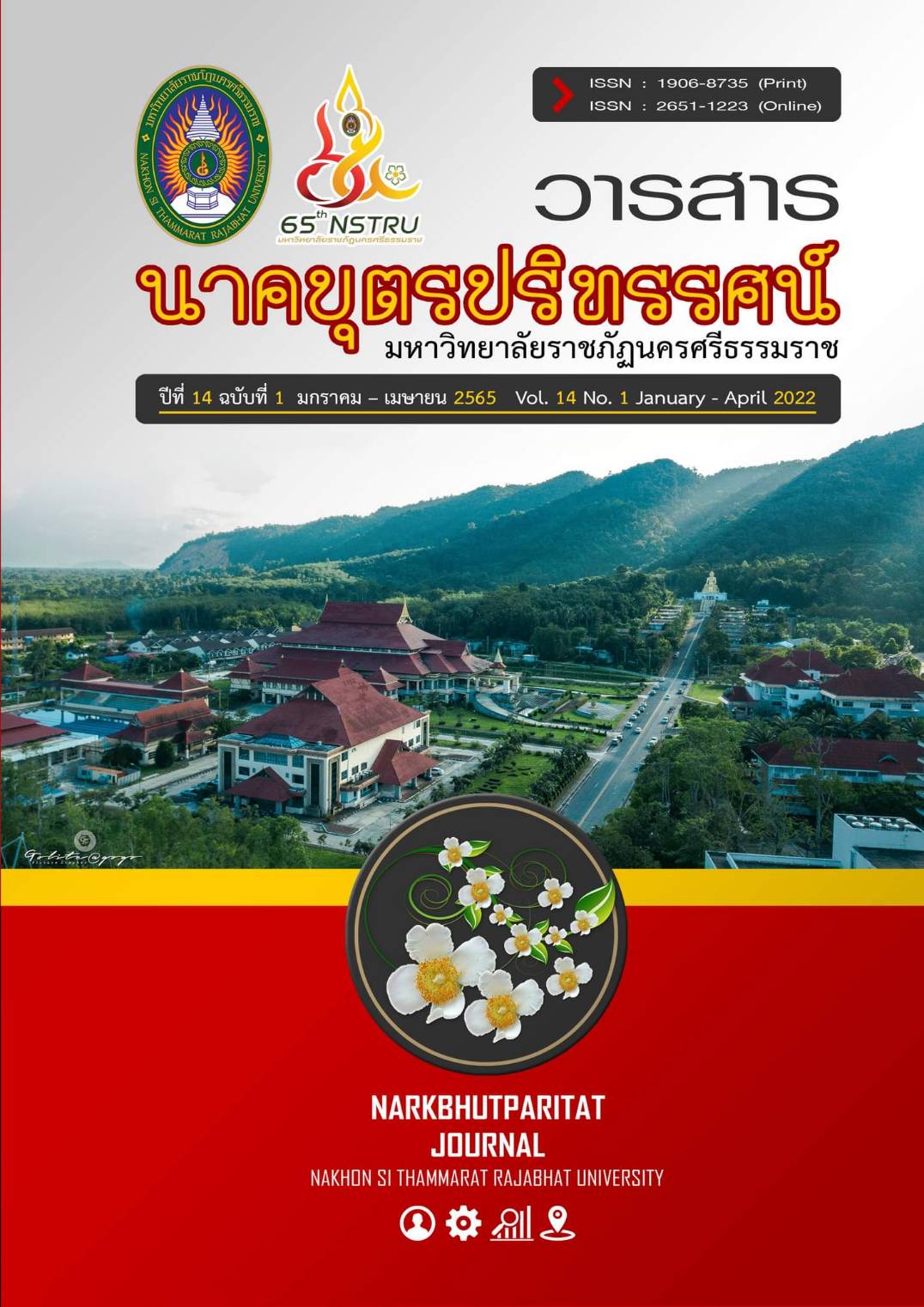Oral Literature: Essences of Thai Muslim Folk Tales in Nakian Subdistrict, Muang District, Nakhon Si Thammarat Province
Main Article Content
Abstract
This research aimed to collect and study the essence of Thai Muslim folk tales in Nakian Subdistrict, Muang District, Nakhon Si Thammarat Province. The research used qualitative methodology and collected field data using non-participant observation, in-depth interviews, and focus groups. The researcher chose eight villages in Nakian Subdistrict, Muang District in Nakhon Si Thammarat Province to collect the data. All villages must have Muslim people, not less than 80 %. The researcher used snowball sampling to select the key informants. These key informants must be Muslim people over 40 years old and have settled in this locality for over 20 years. They must have the suitable ability with a good thinking process and memory and know how to tell folk tales. The research presented the data analysis results using descriptive analysis.
The research showed that there were 55 folk tales collected. The essences of Thai folk tales in Nakian Subdistrict, Muang District, Nakhon Si Thammarat Province were composed of 4 main issues: belief in Karma, belief in holy things, family institution, and social institution. The stories in the folk tales reflected that Thai-Muslim people in Nakian Subdistrict gave importance to religious dharmic principles and were strict with the convention. They conducted their daily life under the rules that were the social norm because it was vital to have good performance in daily life. They inset the dharmic principles, instructions, and religious practices into the folk tales. They used folk tales as a tool to teach and instruct their descendants or people in society.
Article Details

This work is licensed under a Creative Commons Attribution-NonCommercial-NoDerivatives 4.0 International License.
References
Boonyarit, K. & Kamnoedthong, S. (2021). A Comparative Study of Motifs in Trickery Folktales: Pohneh-Mohneh and Sri Thanonchai. Princess of Naradhiwas University Journal of Humanities and Social Sciences, 8(1), 194-209. (in Thai)
Chumphon, P. (2015). Fundamentals of local literature in four regions. Bangkok: Odeon Store. (in Thai)
Creswell, J. W. & Creswell, J. D. (2018). Research design: Qualitative, quantitative, and mixed methods approaches (5th ed). Los Angeles, CA: SAGE.
Damsri, W. (1996). Folktales : Local cultural heritage of Nakhon Si Thammarat. Nakhon Si Thammarat: Faculty of Humanities and Social Sciences, Nakhon Si Thammarat Rajabhat Institute. (in Thai)
Lekduwee, N. (1994). An analysis of Thai Muslim folktales in Changwat Pattani. (Master of Arts thesis). Prince of Songkhla University Pattani Campus, Faculty of Humanities and Social Sciences, Program in Thai (Literature). (in Thai)
Nakean Subdistrict Administrative Organization. (2018). Local Development Plan 2018-2021. Nakhon Si Thammarat: Nakean Subdistrict Administrative Organization. (in Thai)
Nimmanhaemin, P. (1995). Folktales. Teaching documents in Thai language, Unit 3, Nonthaburi : Sukhothai Thammathirat Open University. (in Thai)
Petchnok, K. (2009). Southern Thai Folktales. Pathum Thani: Skybooks. (in Thai)
Poolsawat, S. (1996). Study of folk tales of Thai Muslims at Moklan Sub-district, Tha Sala District Nakhon Si Thammarat Province. (Master of Arts thesis). Srinakharinwirot University, Southern Campus, Faculty of Humanities and Social Sciences, Program in Thai Studies. (in Thai)
Taylor, S.J., Bogdan, R., & DeVault, M.L. (2016). Introduction to qualitative research methods : a guidebook and resource (4th ed). New Jersey: John Wiley & Sons, Inc.
Yoswarissakul, Y. (2017). A Study of Muslim Folktales in Pattani Province. Academic Services Journal, Prince of Songkla University, 28(3), 185-195. (in Thai)


